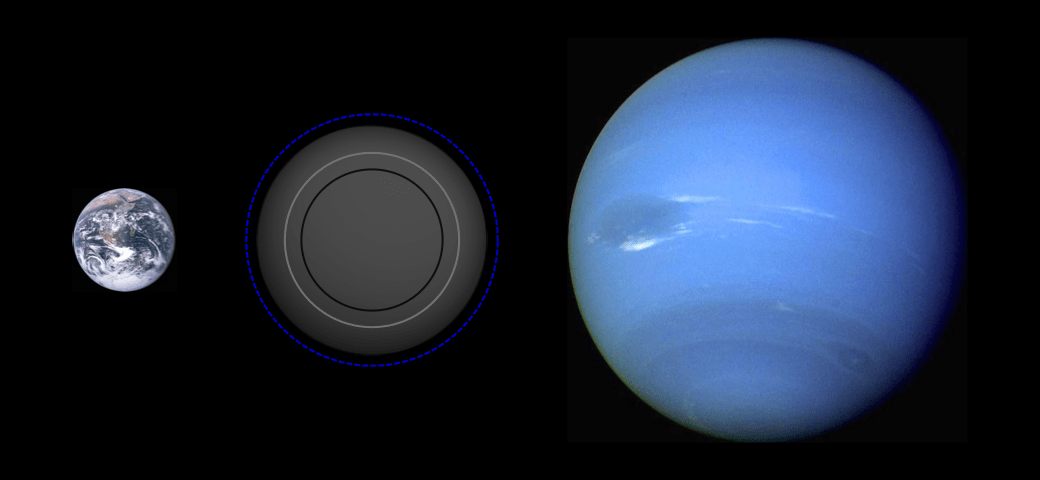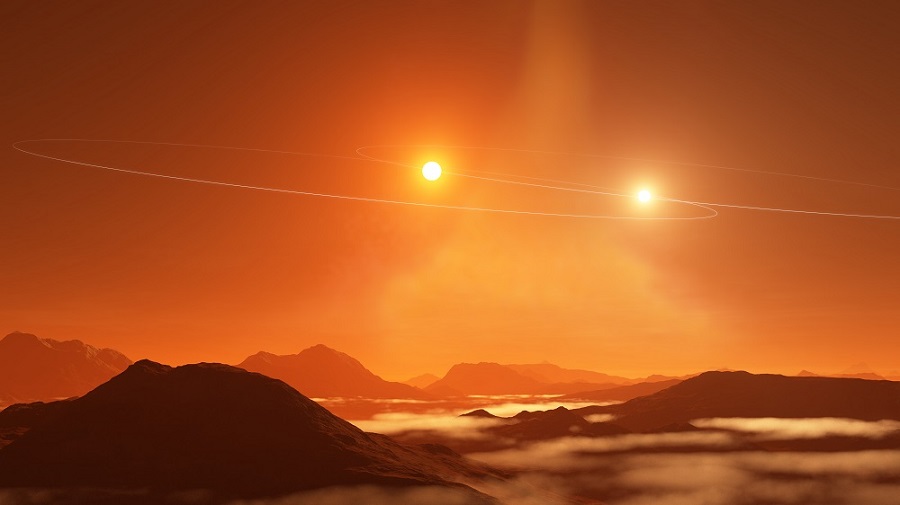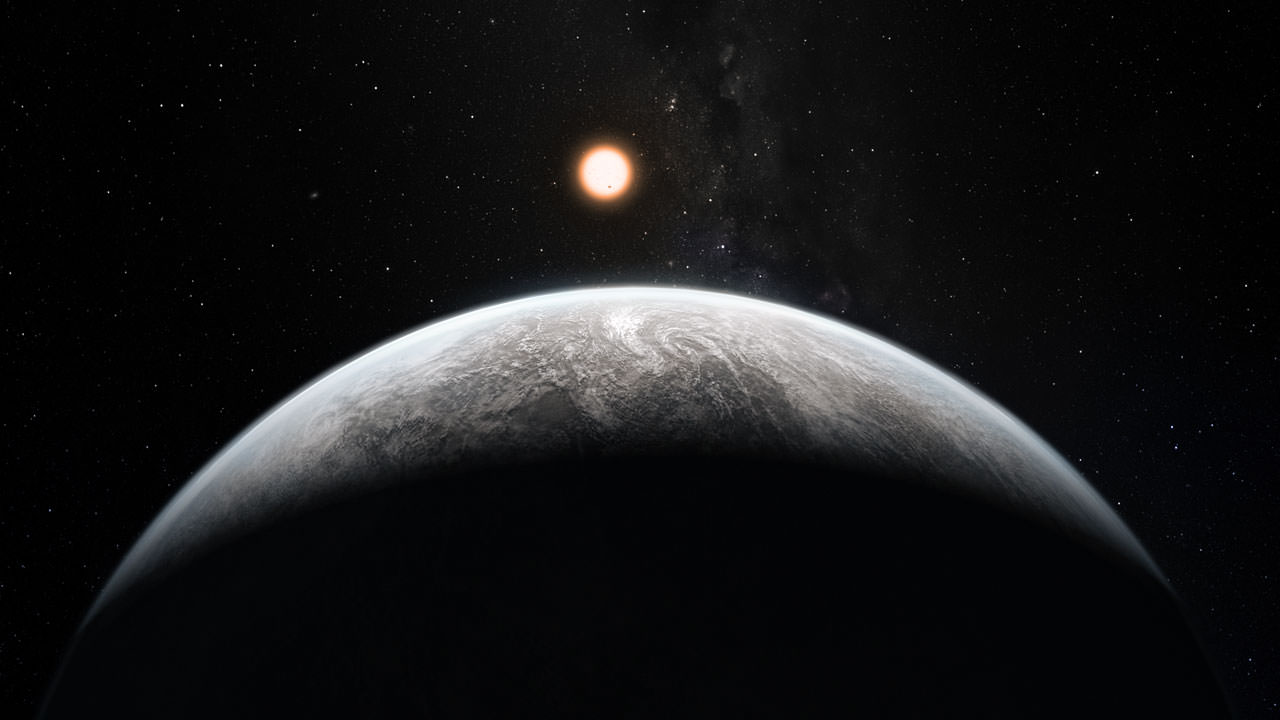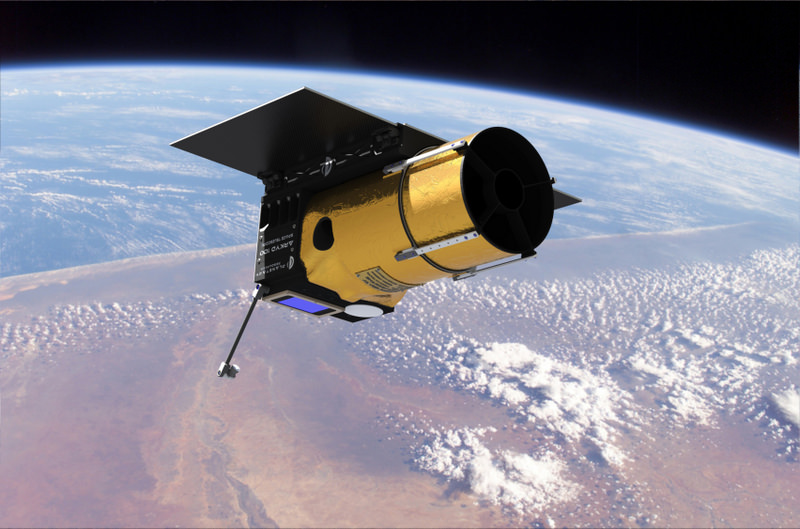Researchers at the Flatiron Institute’s Center for Computational Astrophysics published a paper last week that just might explain a mysterious gap in planet sizes beyond our solar system. Planets between 1.5 and 2 times Earth’s radius are strikingly rare. This new research suggests that the reason might be because planets slightly larger than this, called mini-Neptunes, lose their atmospheres over time, shrinking to become ‘super-Earths’ only slightly larger than our home planet. These changing planets only briefly have a radius the right size to fill the gap, quickly shrinking beyond it. The implication for planetary science is exciting, as it affirms that planets are not static objects, but evolving and dynamic worlds.
Continue reading “Larger Rocky Planets Might be Rare Because They Shrunk”What Are Extrasolar Planets?
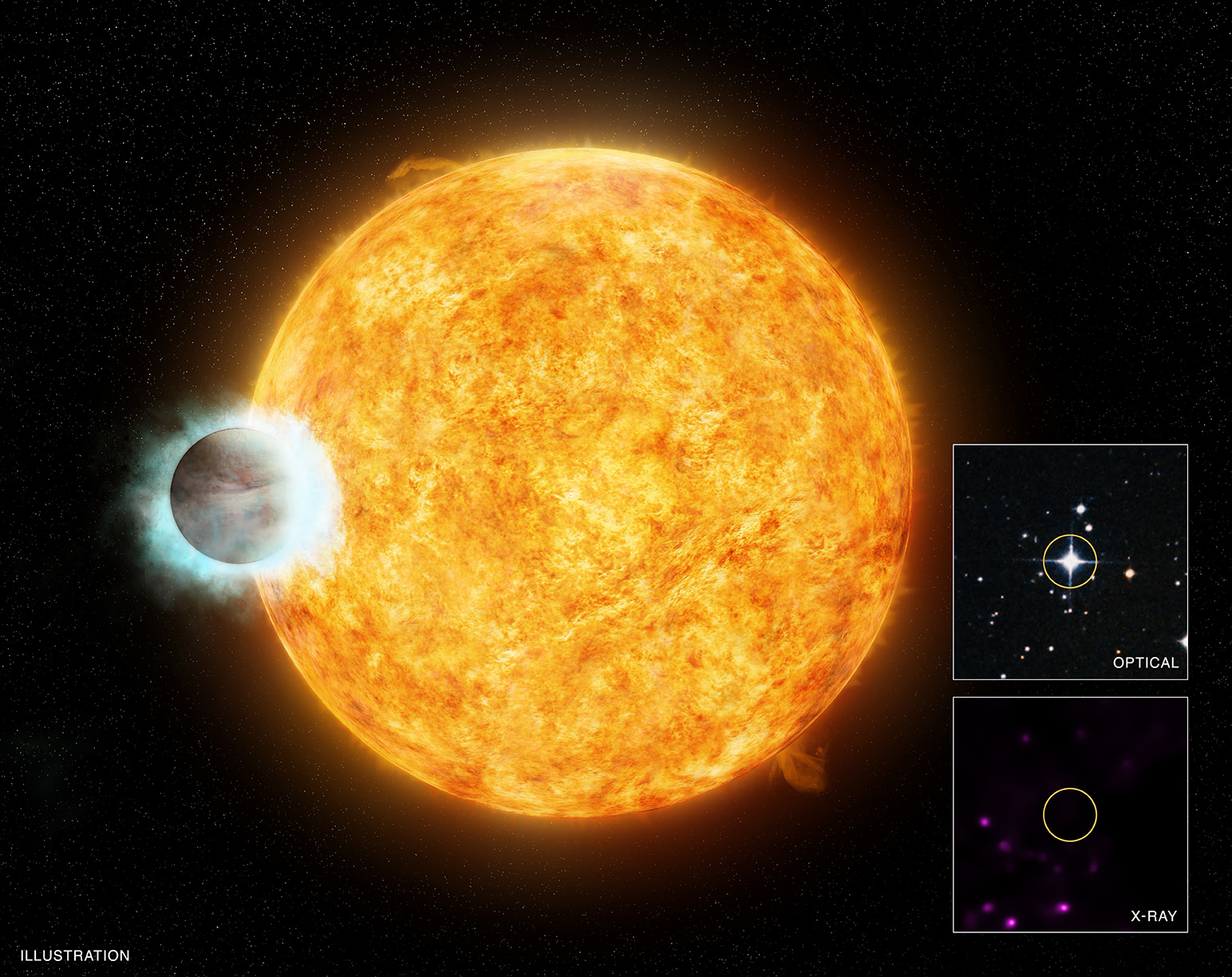
For countless generations, human beings have looked out at the night sky and wondered if they were alone in the Universe. With the discovery of other planets in our Solar System, the true extent of the Milky Way galaxy, and other galaxies beyond our own, this question has only deepened and become more profound.
And whereas astronomers and scientists have long suspected that other star systems in our galaxy and the Universe had orbiting planets of their own, it has only been within the last few decades that any have been observed. Over time, the methods for detecting these “extrasolar planets” have improved, and the list of those whose existence has been confirmed has grown accordingly (over 4000 and counting!)
Continue reading “What Are Extrasolar Planets?”Study Finds Bizarre Exoplanet Orbits for Binary Stars
There’s an iconic scene in the original Star Wars movie where Luke Skywalker looks out over the desert landscape of Tatooine at the amazing spectacle of a double sunset. Now, a new study out of the National Radio Astronomy Observatory (NRAO) suggests that such exotic exoplanet worlds orbiting multiple stars may exist in misaligned orbits, far out of the primary orbital plane.
Continue reading “Study Finds Bizarre Exoplanet Orbits for Binary Stars”Complex Life Might Require a Very Narrow Habitable Zone
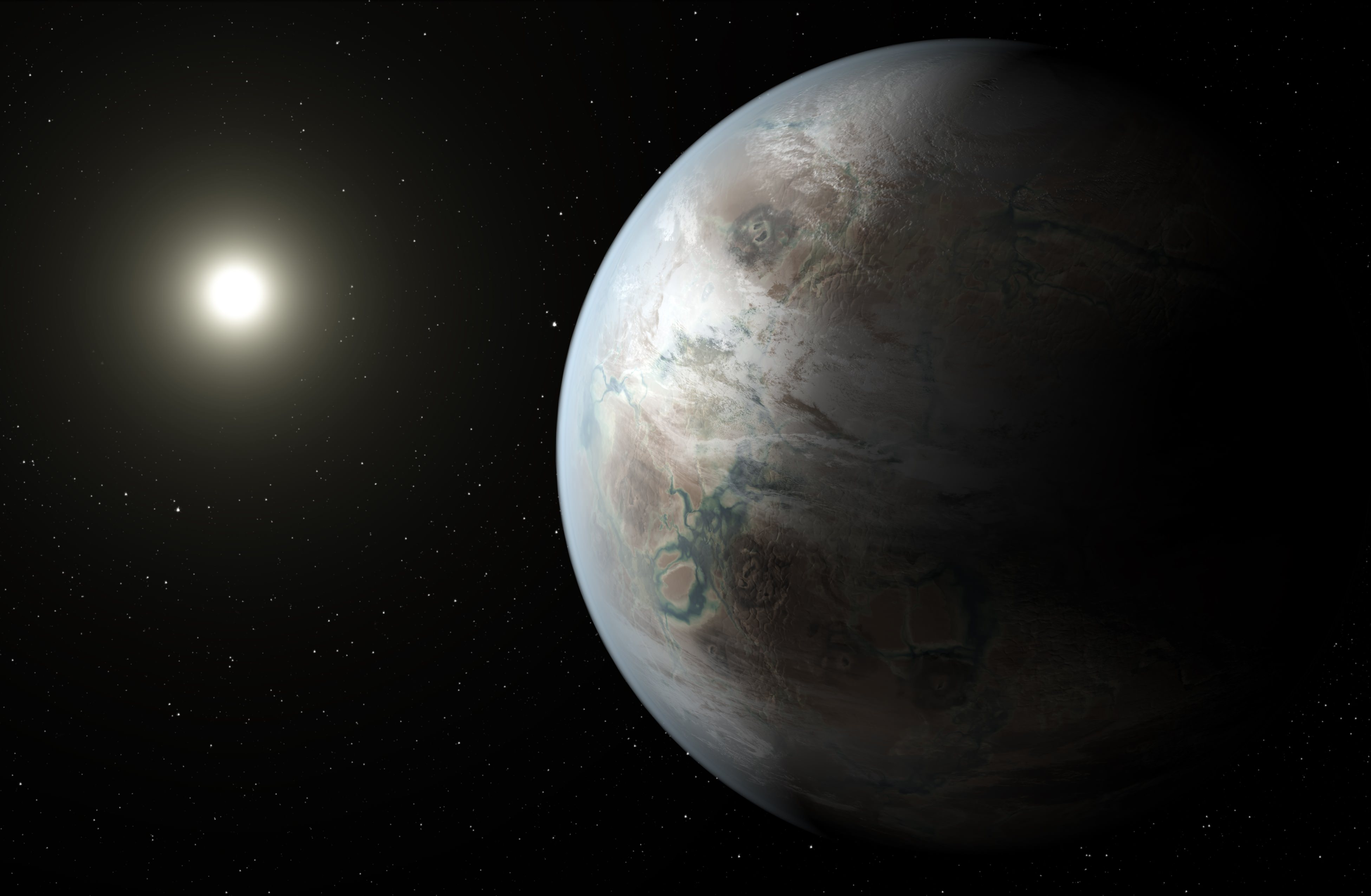
Since the Kepler Space Telescope was launched into space, the number of known planets beyond our Solar System (exoplanets) has grown exponentially. At present, 3,917 planets have been confirmed in 2,918 star systems, while 3,368 await confirmation. Of these, about 50 orbit within their star’s circumstellar habitable zone (aka. “Goldilocks Zone”) , the distance at which liquid water can exist on a planets’ surface.
However, recent research has raised the possibility that we consider to be a habitable zone is too optimistic. According to a new study that recently appeared online, titled “A Limited Habitable Zone for Complex Life“, habitable zones could be much narrower than originally thought. These finds could have a drastic impact on the number of planets scientists consider to be “potentially habitable”.
Continue reading “Complex Life Might Require a Very Narrow Habitable Zone”Two Newly-Discovered Exoplanets are Probably the Result of a Catastrophic Collision
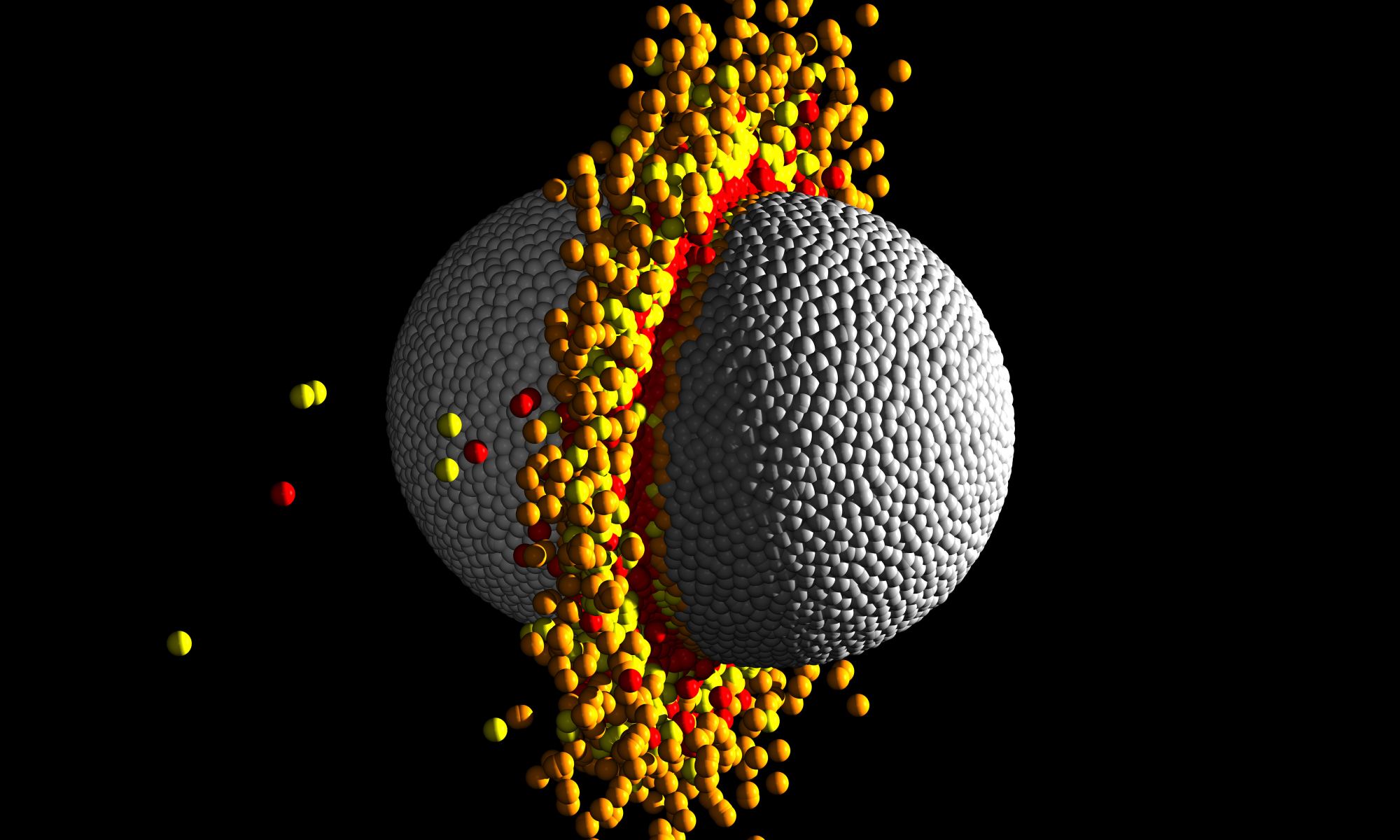
How can two planets so similar in some respects have such different densities? According to a new study, a catastrophic collision may be to blame.
In our Solar System, all the inner planets are small rocky worlds with similar densities, while the outer planets are gas giants with their own similar densities. But not all solar systems are like ours.
Continue reading “Two Newly-Discovered Exoplanets are Probably the Result of a Catastrophic Collision”Three Possible Super-Earths Discovered Around Nearby Sun-Like Star
Since it was launched in 2009, NASA’s Kepler mission has continued to make important exoplanet discoveries. Even after the failure of two reaction wheels, the space observatory has found new life in the form of its K2 mission. All told, this space observatory has detected 5,017 candidates and confirmed the existence of 2,494 exoplanets using the Transit Method during its past eight years in service.
The most recent discovery was made by an international team of astronomers around Gliese 9827 (GJ 9827), a late K-type dwarf star located about 100 light-years from Earth. Using data provided by the K2 mission, they detected the presence of three Super-Earths. This star system is the closest exoplanet-hosting star discovered by K2 to date, which makes these planets well-suited for follow-up studies.
The study which describes their findings, titled “A System of Three Super Earths Transiting the Late K-Dwarf GJ 9827 at Thirty Parsecs“, was recently published online. Led by Dr. Jospeh E. Rodriguez from the Harvard-Smithsonian Center for Astrophysics (CfA), the team includes researchers from the University of Austin, the Massachusetts Institute of Technology (MIT), and the NASA Exoplanet Science Institute (NExSci) at Caltech.
The Transit Method, which remains one of the most trusted means for exoplanet detection, consists of monitoring stars for periodic dips in brightness. These dips correspond to planets passing (aka. transiting) in front of the star causing a measurable drop in the light coming from it. This method also offers unique opportunities to examine light passing through an exoplanet’s atmosphere. As Dr. Rodriguez told Universe Today via email:
“The success of Kepler combined with ground based radial velocity and transit surveys has now led to the discovery of over 4000 planetary system. Since we now know that planets appear to be quite common, the field has shifted its focus to understand architectures, interior structures, and atmospheres. These key properties of planetary systems help us understand some fundamental questions: how do planets form and evolve? What are the terrestrial planets around other stars like, are they similar to Earth in composition and atmosphere?”
These questions were central to the team’s study, which relied on data obtained during Campaign 12 of the K2 mission – from December 2016 to March 2017. After consulting this data, the team noted the presence of three super-Earth sized planets orbiting in a very compact configuration. This system, as they note in their study, was independently and simultaneously discovered by another team from Wesleyan University.
These three planetary objects, designated as GJ 9827 b, c, and d, are located at a distance of about 0.02, 0.04 and 0.06 AU from their host star (respectively). Owing to their sizes and radii, these planets are classified as “Super-Earths”, and have radii of 1.6, 1.2, and 2.1 times the radius of Earth. They are also located very close to their host star, completing orbits within 6.2 days.
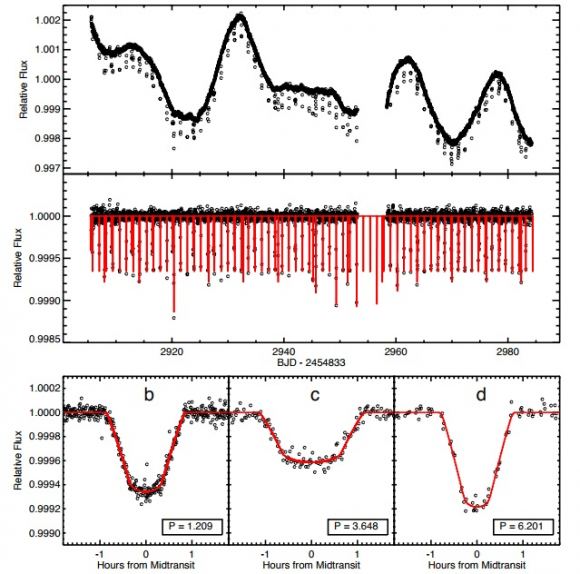
Specifically, GJ 9827 b measures 1.64 Earth radii, has a mass of up to 4.25 Earth masses, a 1.2 day orbital period, and a temperature of 1,119 K (846 °C; 1555 °F). Meanwhile, GJ 9827 c measures 1.29 Earth radii, has a mass of 2.62 Earth masses, an orbital period of 3.6 days, and a temperature of 774 K (500 °C; 934°F). Lastly, GJ 9827 d measures 2.08 Earth radii, has a mass of 5.3 Earth masses, a 6.2 day period, and a temperature of 648 K (375 °C; 707 °F).
In short, all three planets are very hot, with temperatures that are hot as Venus and Mercury or (in the case of GJ 9827b) is even hotter! Interestingly, these radii and mass estimates place these planets within the transition boundary between terrestrial (i.e. rocky) planets and gas giants. In fact, the team found that GJ 9827 b and c fall in or close to the known gap in radius distribution for planets that are in between these two populations.
In other words, these planets could be rocky or gaseous, and the team won’t know for sure until they can place more accurate constraints on their masses. What’s more, none of these planets are likely to be capable of supporting life, certainly not as we know it! So if you were hoping that this latest find would produce an Earth-analog or potentially habitable planet, you’re sadly mistaken.
Nevertheless, the fact that these planets straddle the radius and mass boundary between terrestrial and gaseous planets – and the fact that this system is the closest planetary system to be identified by the K2 mission – makes the system well-situated for studies designed to probe the interior structure and atmosphere of exoplanets.
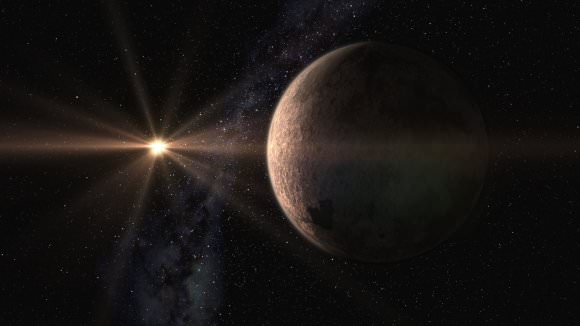
The reason for this has much to do with the brightness of the host star. In addition to being relatively close to our Sun (~100 light-years), this K-type star is very bright and also relatively small – about 60% the size of our Sun. As a result, any planet passing in front of it would be able to block out more light than if the star were larger. But as noted, there’s also the curious nature of the planets themselves. As Dr. Rodriguez indicated:
“Recently, we have found planets around other stars that have no analogue to a planet in our own system. These are known as “super Earths” and they have radii of 1-3 times the radius of the Earth. To add to the complexity of these planets, their is a clear dichotomy in their composition within this radius range. The larger super Earths (>1.6 x radius of the Earth) appear to be less dense, consistent with a puffy Hydrogen/Helium atmosphere. However, the smaller super Earths are more dense, consistent with an Earth-like composition (rock).
“As mentioned above, the GJ 9827 system hosts three super Earth sized planets. Interestingly, planet c has a radius consistent with it being rocky, planet d is consistent with being puffy, and planet b has a radius that is right on what we believe to be the transition boundary between rock and gas. Therefore, by studying the atmospheres of super-Earths, we may better understand the transition from dense rocky planets to puffier planets with very thick atmospheres (like Neptune).”
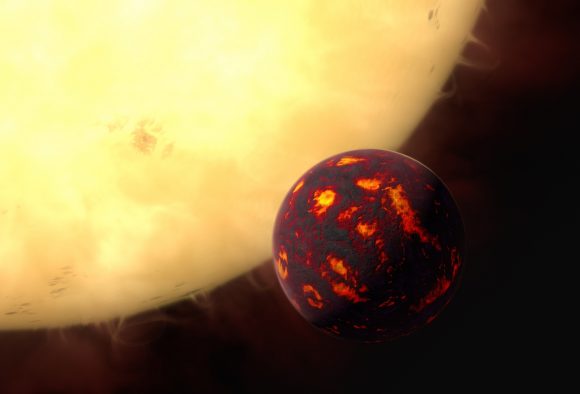
Looking ahead, the team hopes to conduct further studies to determine the masses of these planets more precisely. From this, they will be able to place better constraints on their compositions and determine if they are Super-Earths, mini gas giants, or some of each. Beyond that, they are to conduct more detailed studies of this system with next-generation instruments like the James Webb Space Telescope (JWST), which is scheduled to launch in 2018.
“I am really interested in studying the atmosphere of GJ 9827 b, whether it is rocky or puffy,” said Dr. Rodriguez. “This planet has a radius at the rock/gas transition but it is very close to its host star. Therefore, by studying the chemical composition of its atmosphere we may better understand the impact of the host star’s proximity has on the evolution of its atmosphere. To do this we would use JWST to take spectroscopic observations during the transit of GJ 9827b (known as “Transmission Spectroscopy”). From this observations we will gather information on the chemical composition and extent of the planet’s atmosphere.“
Now that we have thousands of extra-solar planet discoveries under our belt, its only natural that research would be shifting towards trying to understand these planets better. In the coming years and decades, we are likely to learn volumes about the respective structures, compositions, atmospheres, and surface features of many distant worlds. One can only imagine what kind of things these studies will turn up!
Further Reading: arXiv
X-ray Study Shows Older Stars May be More Supportive to Life
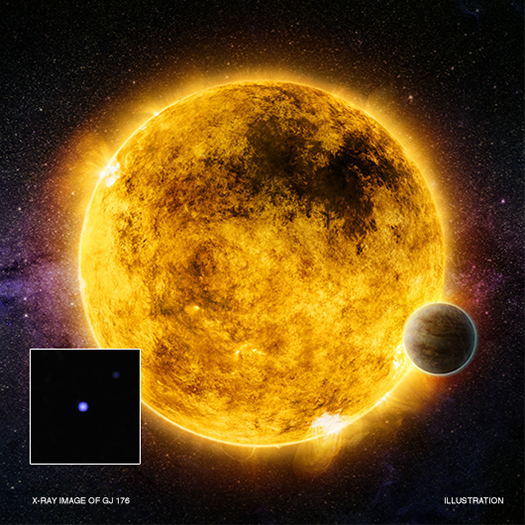
Astronomers have long understood that there is a link between a star’s magnetic activity and the amount of X-rays it emits. When stars are young, they are magnetically active, due to the fact that they undergo rapid rotation. But over time, the stars lose rotational energy and their magnetic fields weaken. Concurrently, their associated X-ray emissions also begin to drop.
Interestingly, this relationship between a star’s magnetic activity and X-ray emissions could be a means for finding potentially-habitable star systems. Hence why an international team led by researchers from Queen’s University Belfast conducted a study where they cataloged the X-ray activity of 24 Sun-like stars. In so doing, they were able to determine just how hospitable these star systems could be to life.
This study, titled “An Improved Age-Activity Relationship for Cool Stars Older than a Gigayear“, recently appeared in the Monthly Notices of the Royal Astronomical Society. Led by Rachel Booth, a PhD student from the Astrophysics Research Center at Queen’s University Belfast, the team used data from NASA’s Chandra X-ray Observatory and the ESA’s XMM-Newton to examine how the X-ray brightness of 24 Sun-like stars changed over time.
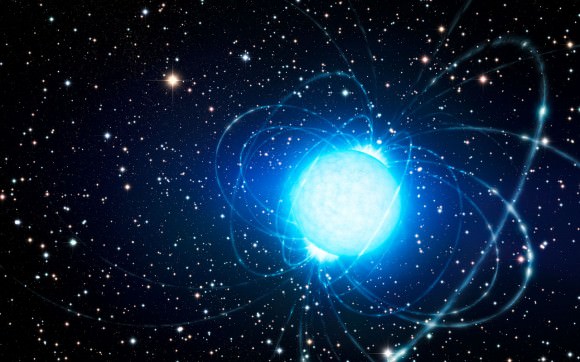
To understand how stellar magnetic activity (and hence, X-ray activity) changes over time, astronomers require accurate age assessments for many different stars. This has been difficult in the past, but thanks to mission like NASA’s Kepler Space Observatory and the ESA’s Convection, Rotation and planetary Transits (CoRoT) mission, new and precise age estimates have become available in recent years.
Using these age estimates, Booth and her colleagues relied on data from the Chandra X-ray observatory and the XMM-Newton obervatory to examine 24 nearby stars. These stars were all similar in mass to our Sun (a main sequence G-type yellow dwarf star) and at least 1 billion years of age. From this, they determined that there was a clear link between the star’s age and their X-ray emissions. As they state in their study:
“We find 14 stars with detectable X-ray luminosities and use these to calibrate the age-activity relationship. We find a relationship between stellar X-ray luminosity, normalized by stellar surface area, and age that is steeper than the relationships found for younger stars…”
In short, of the 24 stars in their sample, the team found that 14 had X-ray emissions that were discernible. From these, they were able to calculate the star’s ages and determine that there was a relationship between their longevity and luminosity. Ultimately, this demonstrated that stars like our Sun are likely to emit less high-energy radiation as they exceed 1 billion years in age.
And while the reason for this is not entirely clear, astronomers are currently exploring various possible causes. One possibility is that for older stars, the reduction in spin rate happens more quickly than it does for younger stars. Another possibility is that the X-ray brightness declines more quickly for older, more slowly-rotating stars than it does for younger, faster ones.
Regardless of the cause, the relationship between a star’s age and its X-ray emissions could provide astronomers and exoplanet hunters with another tool for gauging the possible habitability of a system. Wherever a G-type or K-type star is to be found, knowing the age of the star could help place constraints on the potential habitability of any planets that orbit it.
Venus 2.0 Discovered In Our Own Back Yard
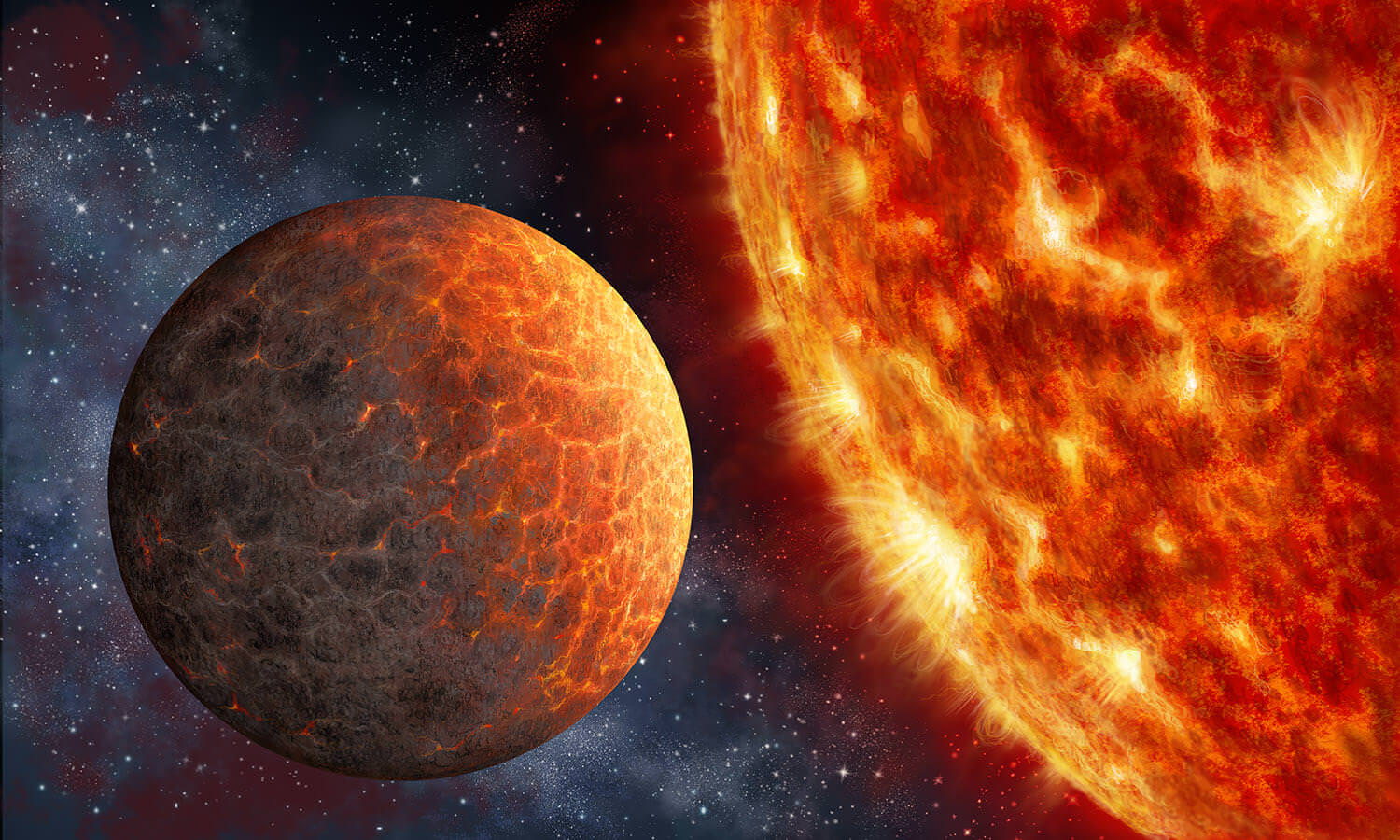
It has been an exciting time for exoplanet research of late! Back in February, the world was astounded when astronomers from the European Southern Observatory (ESO) announced the discovery of seven planets in the TRAPPIST-1 system, all of which were comparable in size to Earth, and three of which were found to orbit within the star’s habitable zone.
And now, a team of international astronomers has announced the discovery of an extra-solar body that is similar to another terrestrial planet in our own Solar System. It’s known as Kepler-1649b, a planet that appears to be similar in size and density to Earth and is located in a star system just 219 light-years away. But in terms of its atmosphere, this planet appears to be decidedly more “Venus-like” (i.e. insanely hot!)
The team’s study, titled “Kepler-1649b: An Exo-Venus in the Solar Neighborhood“, was recently published in The Astronomical Journal. Led by Isabel Angelo – of the SETI Institute, NASA Ames Research Center, and UC Berkley – the team included researchers also from SETI and Ames, as well as the NASA Exoplanet Science Institute (NExScl), the Exoplanet Research Institute (iREx), the Center for Astrophysics Research, and other research institutions.
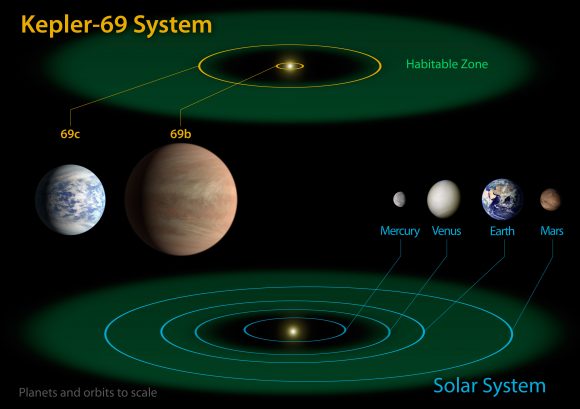
Needless to say, this discovery is a significant one, and the implications of it go beyond exoplanet research. For some time, astronomers have wondered how – given their similar sizes, densities, and the fact that they both orbit within the Sun’s habitable zone – that Earth could develop conditions favorable to life while Venus would become so hostile. As such, having a “Venus-like” planet that is close enough to study presents some exciting opportunities.
In the past, the Kepler mission has located several extra-solar planets that were similar in some ways to Venus. For instance, a few years ago, astronomers detected a Super-Earth – Kepler-69b, which appeared to measure 2.24 times the diameter of Earth – that was in a Venus-like orbit around its host the star. And then there was GJ 1132b, a Venus-like exoplanet candidate that is about 1.5 times the mass of Earth, and located just 39 light-years away.
In addition, dozens of smaller planet candidates have been discovered that astronomers think could have atmospheres similar to that of Venus. But in the case of Kepler-1649b, the team behind the discovery were able to determine that the planet had a sub-Earth radius (similar in size to Venus) and receives a similar amount of light (aka. incident flux) from its star as Venus does from Earth.
However, they also noted that the planet also differs from Venus in a few key ways – not the least of which are its orbital period and the type of star it orbits. As Dr. Angelo told Universe Today via email:
“The planet is similar to Venus in terms of it’s size and the amount of light it receives from it’s host star. This means it could potentially have surface temperatures similar to Venus as well. It differs from Venus because it orbits a star that is much smaller, cooler, and redder than our sun. It completes its orbit in just 9 days, which places it close to its host star and subjects it to potential factors that Venus does not experience, including exposure to magnetic radiation and tidal locking. Also, since it orbits a cooler star, it receives more lower-energy radiation from its host star than Earth receives from the Sun.”
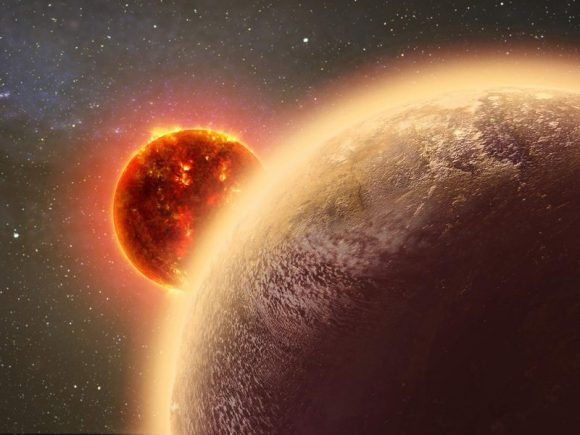
In other words, while the planet appears to receive a comparable amount of light/heat from its host star, it is also subject to far more low-energy radiation. And as a potentially tidally-locked planet, the surface’s exposure to this radiation would be entirely disproportionate. And last, its proximity to its star means it would be subject to greater tidal forces than Venus – all of which has drastic implications for the planet’s geological activity and seasonal variations.
Despite these differences, Kepler-1649b remains the most Venus-like planet discovered to date. Looking to the future, it is hoped that next-generations instruments – like the Transiting Exoplanet Survey Satellite (TESS), the James Webb Telescope and the Gaia spacecraft – will allow for more detailed studies. From these, astronomers hope to more accurately determine the size and distance of the planet, as well as the temperature of its host star.
This information will, in turn, help us learn a great deal more about what goes into making a planet “habitable”. As Angelo explained:
“Understanding how hotter planets develop thick, Venus-like atmospheres that make them inhabitable will be important in constraining our definition of a ‘habitable zone’. This may become possible in the future when we develop instruments sensitive enough to determine chemical compositions of planet atmospheres (around dim stars) using a method called ‘transit spectroscopy’, which looks at the light from the host star that has passed through the planet’s atmosphere during transit.”
The development of such instruments will be especially useful given joust how many exoplanets are being detected around neighboring red dwarf stars. Given that they account for roughly 85% of stars in the Milky Way, knowing whether or not they can have habitable planets will certainly be of interest!
Further Reading: The Astronomical Journal
The Next Generation of Exploration: The DAVINCI Spacecraft
It’s no secret that there has been a resurgence in interest in space exploration in recent years. Much of the credit for this goes to NASA’s ongoing exploration efforts on Mars, which in the past few years have revealed things like organic molecules on the surface, evidence of flowing water, and that the planet once had a denser atmosphere – all of which indicate that the planet may have once been hospitable to life.
But when it comes to the future, NASA is looking beyond Mars to consider missions that will send missions to Venus, near-Earth objects, and a variety of asteroids. With an eye to Venus, they are busy investigating the possibility of sending the Deep Atmosphere Venus Investigation of Noble gases, Chemistry, and Imaging (DAVINCI) spacecraft to the planet by the 2020s.
Led by Lori Glaze of the Goddard Spaceflight Center, the DAVINCI descent craft would essentially pick up where the American and Soviet space programs left off with the Pioneer and Venera Programs in the 1970s and 80s. The last time either country sent a probe into Venus’ atmosphere was in 1985, when the Soviet probes Vega 1 and 2 both orbited the planet and released a balloon-supported aerobot into the upper atmosphere.
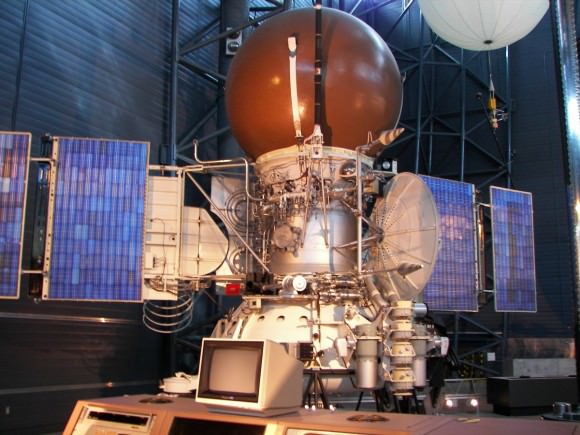
These probes both remained operational for 46 hours and discovered just how turbulent and powerful Venus’ atmosphere was. In contrast, the DAVINCI probe’s mission will be to study both the atmosphere and surface of Venus, and hopefully shed some light on some of the planet’s newfound mysteries. According to the NASA release:
“DAVINCI would study the chemical composition of Venus’ atmosphere during a 63-minute descent. It would answer scientific questions that have been considered high priorities for many years, such as whether there are volcanoes active today on the surface of Venus and how the surface interacts with the atmosphere of the planet.”
These studies will attempt to build upon the data obtained by the Venus Express spacecraft, which in 2008/2009 noted the presence of several infrared hot spots in the Ganis Chasma region near the the shield volcano of Maat Mons (shown below). Believed to be due to volcanic eruptions, this activity was thought to be responsible for significant changes that were noted in the sulfur dioxide (SO²) content in the atmosphere at the time.
What’s more, the Pioneer Venus spacecraft – which studied the planet’s atmosphere from 1978 until its orbit decayed in 1992 – noted a tenfold decreased in the density of SO² at the cloud tops, which was interpreted as a decline following an episode of volcanogenic upwelling from the lower atmosphere.

Commonly associated with volcanic activity here on Earth, SO² is a million times more abundant in Venus’ atmosphere, where it helps to power the runaway greenhouse effect that makes the planet so inhospitable. However, any SO² released into Venus’ atmosphere is also short-lived, being broken down by sunlight within a matter of days.
Hence, any significant changes in SO² levels in the upper atmosphere must have been a recent addition, and some scientists believe that the spike observed in 2008/2009 was due to a large volcano (or several) erupting. Determining whether or not this is the case, and whether or not volcanic activity plays an active role in the composition of Venus’s thick atmosphere, will be central to DAVINCI’s mission.
Along with four other mission concepts, DAVINCI was selected as a semifinalist for the NASA Discovery Program‘s latest calls for proposed missions. Every few years, the Discovery Program – a low-cost planetary missions program that is managed by the JPL’s Planetary Science Division – puts out a call for missions with an established budget of around $500 million (not counting the cost of launch or operation).
The latest call for submissions took place in February 2014, as part of the Discovery Mission 13. At the time, a total of 27 teams threw their hats into the ring to become part of the next round of space exploration missions. Last Wednesday, September 30th, 2015, five semifinalists were announced, one (or possibly two) of which will be chosen as the winner(s) by September 2016.
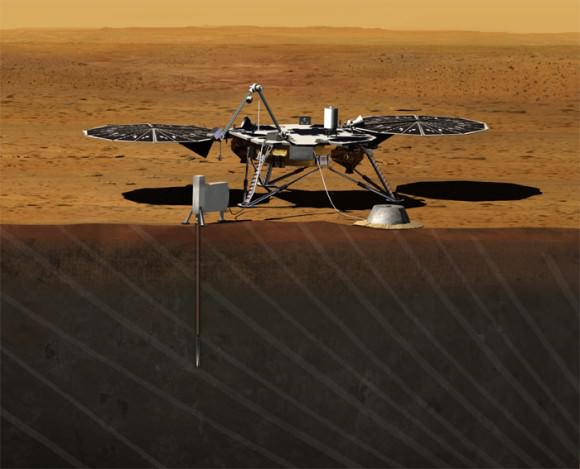
These finalists will receive $3 million in federal grants for detailed concept studies, and the mission (or missions) that are ultimately chosen will be launched by December 31st, 2021. The Discovery Program began back in 1992, and launched its first mission- the Mars Pathfinder – in 1996. Other Discovery missions include the NEAR Shoemaker probe that first orbited an asteroid, and the Stardust-NExT project, which returned samples of comet and interstellar dust to Earth.
NASA’s MESSENGER spacecraft, the planet-hunting Kepler telescope, and the Dawn spacecraft were also developed and launched under the Discovery program. The winning proposal of the Discovery Program’s 12th mission, which was issued back in 2010, was the InSight Mars lander. Set to launch in March of 2016, the lander will touch down on the red planet, deploy instruments to the planet’s interior, and measure its seismic activity.
NASA hopes to infuse the next mission with new technologies, offering up government-furnished equipment with incentives to sweeten the deal for each proposal. These include a supply of deep space optical communications system that are intended to test new high-speed data links with Earth. Science teams that choose to incorporate the laser telecom unit will be entitled to an extra $30 million above their $450 million cost cap.
If science teams wish to send entry probes into the atmospheres of Venus or Saturn, they will need a new type of heat shield. Hence, NASA’s solicitation includes a provision to furnish a newly-developed 3D-woven heat shield with a $10 million incentive. A deep space atomic clock is also available with a $5 million bonus, and NASA has offered to provide xenon ion thrusters and radioisotope heater units without incentives.
As with previous Discovery missions, NASA has stipulated that the mission must use solar power, limiting mission possibilities beyond Jupiter and Saturn. Other technologies may include the NEXT ion thruster and/or re-entry technology.
Arkyd Telescope Reaches $1M Goal, But Still Looking For Planet-Hunting Funds
With more than $1 million in crowdfunded money secured for a public asteroid-hunting space telescope, the ultimate question arises: what about the promised planet chase?
Planetary Resources’ Arkyd-100 telescope reached its $1 million goal yesterday (June 20). But the self-proclaimed asteroid-hunting company has an ambitious aim to add extrasolar planet searching to the list if it can double that goal to $2 million.
The Kickstarter campaign for Arkyd still has 10 days remaining. To keep the funds flowing, the group behind it has released several “stretch” goals if it can reach further milestones:
– $1.3 million: A ground station at an undisclosed “educational partner” that would double the download speed of data from the orbiting observatory.
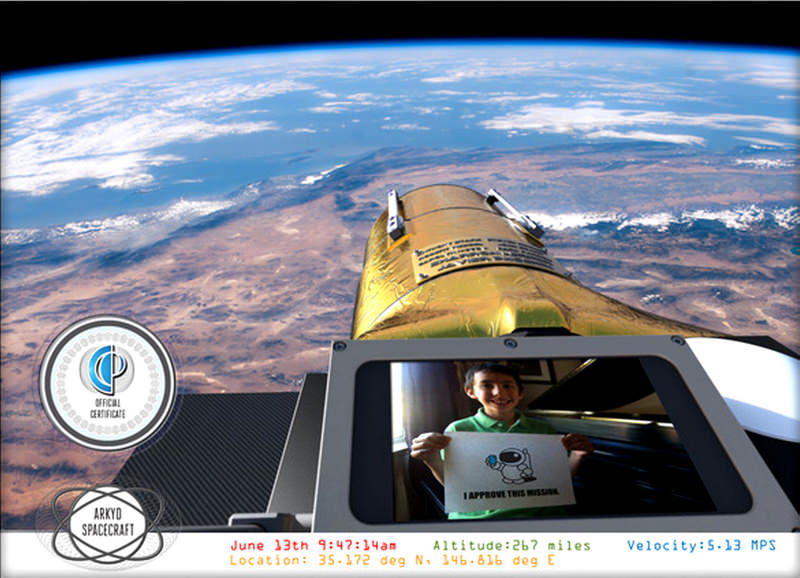
– $1.5 million: This goal, just released yesterday, is aimed at the more than 20,000 people who signed up for “space selfies” incentive where uploaded pictures are photographed on the telescope while it is in orbit. For this goal, “beta selfies” will be taken while the telescope is in the integration phase of the build.
– $1.7 million: The milestone will be announced if Arkyd reaches 15,000 backers. (It has more than 12,000 as of this writing.)
– $2 million: The telescope will hunt for alien planets. Planetary Resources added this goal last week following technical problems plaguing NASA’s Kepler space telescope that could derail the agency’s prolific planet finder.
Also, a hat-tip to NASA’s Peter Edmonds, who works in public affairs for the Chandra X-ray Observatory, for pointing out the campaign’s Kickstarter video in Klingon. Check it out below:

